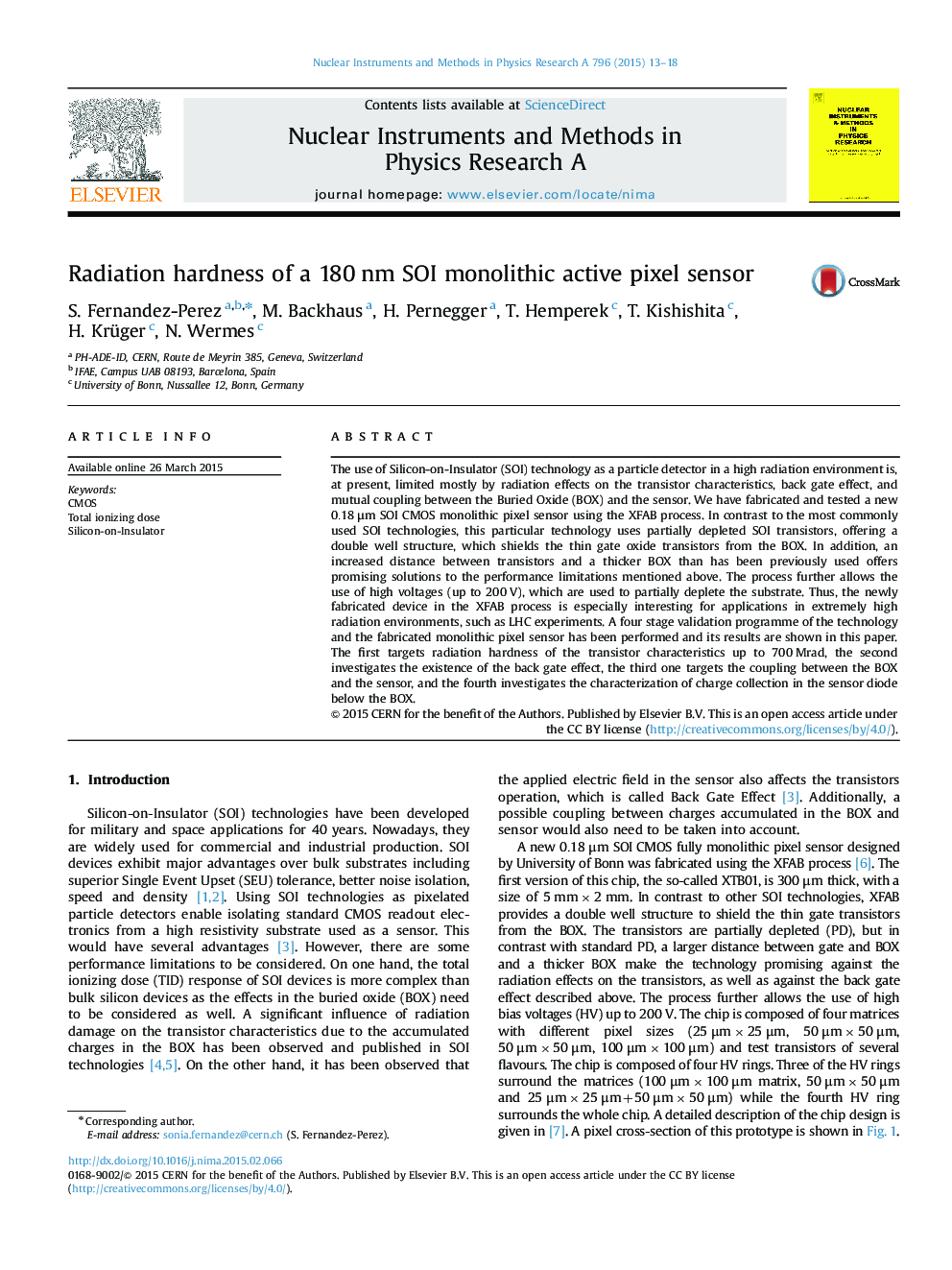| Article ID | Journal | Published Year | Pages | File Type |
|---|---|---|---|---|
| 8172255 | Nuclear Instruments and Methods in Physics Research Section A: Accelerators, Spectrometers, Detectors and Associated Equipment | 2015 | 6 Pages |
Abstract
The use of Silicon-on-Insulator (SOI) technology as a particle detector in a high radiation environment is, at present, limited mostly by radiation effects on the transistor characteristics, back gate effect, and mutual coupling between the Buried Oxide (BOX) and the sensor. We have fabricated and tested a new 0.18μm SOI CMOS monolithic pixel sensor using the XFAB process. In contrast to the most commonly used SOI technologies, this particular technology uses partially depleted SOI transistors, offering a double well structure, which shields the thin gate oxide transistors from the BOX. In addition, an increased distance between transistors and a thicker BOX than has been previously used offers promising solutions to the performance limitations mentioned above. The process further allows the use of high voltages (up to 200 V), which are used to partially deplete the substrate. Thus, the newly fabricated device in the XFAB process is especially interesting for applications in extremely high radiation environments, such as LHC experiments. A four stage validation programme of the technology and the fabricated monolithic pixel sensor has been performed and its results are shown in this paper. The first targets radiation hardness of the transistor characteristics up to 700 Mrad, the second investigates the existence of the back gate effect, the third one targets the coupling between the BOX and the sensor, and the fourth investigates the characterization of charge collection in the sensor diode below the BOX.
Related Topics
Physical Sciences and Engineering
Physics and Astronomy
Instrumentation
Authors
S. Fernandez-Perez, M. Backhaus, H. Pernegger, T. Hemperek, T. Kishishita, H. Krüger, N. Wermes,
